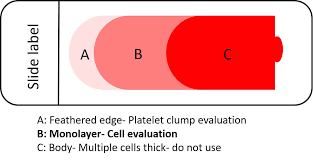A phlebotomist is preparing to draw blood from a patient for therapeutic drug monitoring. Which of the following questions should the phlebotomist ask?
"When was your last dose of lithium?"
"For how long have you been fasting?"
"When did you have your last alcoholic beverage?"
"Have you finished drinking the glucose solution?"
The Correct Answer is A
Choice A Reason:
Asking "When was your last dose of lithium?" is crucial for therapeutic drug monitoring (TDM). TDM is used to tailor dosages and maintain therapeutic levels in a patient’s bloodstream, especially for drugs with narrow therapeutic indices like lithium. The timing of the last dose can significantly affect blood levels, and knowing this information helps in interpreting the results accurately.
Choice B Reason:
While knowing the fasting status of a patient may be relevant for certain tests, it is not typically critical for TDM unless the medication being monitored is affected by food intake. Lithium levels are not significantly influenced by fasting, so this question is less relevant than knowing the timing of the last dose.
Choice C Reason:
Inquiring about the last alcoholic beverage is important if alcohol could interfere with the medication's metabolism or the test's accuracy. However, for lithium TDM, alcohol consumption is not as directly relevant as the timing of the last dose. Alcohol does not typically alter lithium levels unless it affects the patient's hydration status.
Choice D Reason:
Asking if the patient has finished drinking the glucose solution would be pertinent if conducting a glucose tolerance test. However, this is not relevant for TDM of lithium, as the glucose solution does not interfere with lithium levels or the TDM process.
In conclusion, for therapeutic drug monitoring, particularly for lithium, the most critical question is regarding the timing of the last dose. This information is essential to ensure that the blood levels reflect the peak or trough concentration, depending on what is being measured, and to avoid misinterpretation that could lead to inappropriate dosing adjustments.
Nursing Test Bank
Naxlex Comprehensive Predictor Exams
Related Questions
Correct Answer is D
Explanation
Choice A reason:
Covering a quarter of the slide is not an acceptable criterion for the quality of a peripheral blood smear. The smear should be spread across the slide in a manner that allows for proper examination under a microscope, and covering only a quarter of the slide would not provide enough area for an adequate assessment.
Choice B reason:
Having a well-defined edge is not specifically indicative of the quality of a peripheral blood smear. While the edges should be clean to allow for clear viewing of the cells at the margins, the quality is more accurately determined by the distribution and integrity of the cells on the slide.
Choice C reason:
Covering the entire slide is also not a criterion for a quality peripheral blood smear. In fact, if the blood covers the entire slide, it may be too thick to allow for proper cell differentiation and examination. A proper smear should have a gradient of cell distribution, ending with a feathered edge.
Choice D reason:
A feathered edge is the correct criterion for a quality peripheral blood smear. The feathered edge is the thinnest part of the smear and is where the cells are ideally distributed in a single layer, which is optimal for microscopic examination. This allows for the best visualization of cell morphology and is essential for accurate diagnosis.

Correct Answer is A
Explanation
Choice A reason:
Mechanical safety is a critical aspect of laboratory inspections, especially when focusing on equipment maintenance logs. These logs are essential for ensuring that all mechanical equipment is functioning correctly and safely. Regular maintenance and inspection can prevent mechanical failures that could lead to workplace accidents or compromise the integrity of experiments.
Choice B reason:
Chemical safety is undoubtedly important in a laboratory setting; however, it is not the primary focus when the inspection is centered on equipment maintenance logs. Chemical safety would involve the proper storage, handling, and disposal of chemicals, which is a separate concern from the mechanical functioning of equipment.
Choice C reason:
Radiation safety is another vital area in laboratories that work with radioactive materials. However, the maintenance logs for equipment would not typically be the main focus of radiation safety inspections. Instead, radiation safety inspections would concentrate on ensuring proper shielding, monitoring, and training are in place.
Choice D reason:
Electrical safety is also essential, but similar to chemical and radiation safety, it is not the primary focus when inspecting equipment maintenance logs. Electrical safety would involve checking for proper wiring, grounding, and protection against electrical hazards.
Whether you are a student looking to ace your exams or a practicing nurse seeking to enhance your expertise , our nursing education contents will empower you with the confidence and competence to make a difference in the lives of patients and become a respected leader in the healthcare field.
Visit Naxlex, invest in your future and unlock endless possibilities with our unparalleled nursing education contents today
Report Wrong Answer on the Current Question
Do you disagree with the answer? If yes, what is your expected answer? Explain.
Kindly be descriptive with the issue you are facing.
